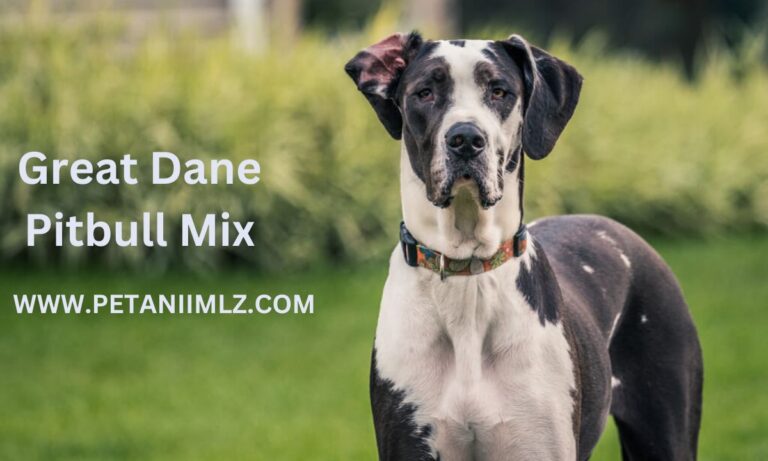How Strong Is a Pit Bull Bite Force? (PSI Measure & Facts)
Introduction to the Pit Bull Bite Force
In this article, we discuss how strong a Pit bull bite force is, Pitbull often find themselves at the center of heated debates. Their reputation, marred by myths and misconceptions, paints them in a light that many argue is undeserved. But what’s the truth behind the common misconceptions surrounding these dogs?
Why Understanding Pit bull Bite Force Matters
- Dispelling Myths: It’s crucial to separate fact from fiction. Many believe that pit bulls have an unmatched bite force, but is that scientifically accurate?
- Responsible Ownership and Training: Understanding the true nature of a pit bull’s bite emphasizes the importance of responsible ownership and training. It’s not just about safety, but also about giving these misunderstood dogs a chance at a life without prejudice.
Delving into the Details
History and Origin of Pit Bulls
The pit bull is not just a breed but a symbol of strength and loyalty. Originating from England, these dogs were initially bred for bull-baiting, a popular sport where dogs were set upon a tethered bull.
Measuring Bite Force: The Science
- PSI Explained: PSI, or Pounds per Square Inch, measures the pressure exerted over one square inch of a surface. It’s a standard unit for measuring bite force.
- Animal Comparison: For context, a human’s bite is around 120 PSI, while a shark’s can exceed 3,000 PSI. Where does the pit bull stand?
Pit Bull Bite Force in Numbers
While individual variations exist, the average pit bull bite strength is around 235 PSI. This is formidable but less than some breeds like the Rottweiler or Mastiff.
Factors Affecting a Pit Bull Bite Force
- Size and Weight: Larger pit bulls generally have a stronger bite.
- Jaw and Head Size: A broader jaw grants more biting power.
- Training and Temperament: An aggressive or fearful dog might bite harder out of fear or defense.
Myths Debunked
- Locking Jaws: Contrary to popular belief, pit bulls do not have a unique “locking” mechanism in their jaws.
- Bite Severity: While any dog bite can be severe, pit bulls don’t inherently bite harder than other breeds of similar size.
- Unpredictable Behavior: The myth that pit bulls “snap” without warning is just that—a myth.
Real-Life Implications of a Pit Bull Bite Force
A bite from a pit bull, like any large dog, can cause significant harm. This underscores the importance of responsible ownership and proper training.

Which Animals Have the Strongest Bite?
The bite force of an animal is often measured in PSI (Pounds per Square Inch), which gauges the pressure exerted over one square inch of a surface. Here are some of the animals with the strongest bite forces:
- Saltwater Crocodile: With a bite force of around 3,700 PSI, the saltwater crocodile has the strongest bite of any living animal. They are apex predators in their environments and use their powerful jaws to capture and consume prey.
- Nile Crocodile: Another formidable reptile, the Nile crocodile’s bite force is estimated to be around 5,000 PSI, though some sources suggest it might be slightly less than the saltwater crocodile.
- Great White Shark: The iconic predator of the seas, the great white shark has a bite force estimated at 4,000 PSI. Their jaws are equipped with rows of sharp teeth that can easily tear through flesh.
- Hippopotamus: Despite their herbivorous diet, hippos have a powerful bite force of around 1,800 PSI. They have massive jaws and long, sharp canines that they use for defense and during territorial disputes.
- Jaguar: Among the big cats, the jaguar stands out with a bite force of around 1,500 to 2,000 PSI. They often kill their prey with a single bite to the skull.
- Gorilla: Gorillas have a bite force estimated at around 1,300 PSI. Their strong jaws are adapted for their primarily vegetarian diet, which includes hard plants and fruits.
- Hyena: Known for their ability to crush bones, spotted hyenas have a bite force of about 1,100 PSI.
- Alligator Snapping Turtle: This freshwater turtle native to the southeastern United States has a bite force of around 1,000 PSI. Their powerful jaws can snap through bone.
- Grizzly Bear: Grizzly bears, also known as North American brown bears, have a bite force estimated at 1,160 PSI. They use their strong jaws for both hunting and foraging.
- Bull Shark: Unlike the great white, the bull shark frequents both salt and fresh water and has a bite force of around 1,300 PSI.Top of Form
Are Pit Bull Bite Force More Dangerous?
The question of whether pit bull bite force are more dangerous is a topic of debate and can be approached from various angles. Here are some points to consider:
- Bite Force: As previously mentioned, pit bulls have a strong bite force, but it’s not the strongest among all dog breeds. Some breeds, like the Rottweiler or Mastiff, have a stronger bite force. However, bite force alone doesn’t determine the potential danger of a bite.
- Bite Style: Some argue that the way pit bulls bite—holding on and shaking—is what makes their bites more dangerous. This style can cause more significant tissue damage compared to a single puncture wound.
- Size and Strength: Pit bulls are medium to large-sized dogs with a muscular build. A bite from a larger, stronger dog can cause more damage than a bite from a smaller dog, regardless of the breed.
- Temperament and Training: A dog’s behavior, including its propensity to bite, is influenced by genetics, upbringing, training, socialization, health, and environment. An aggressive or poorly trained pit bull can be more dangerous than a well-socialized and trained one.
- Statistics and Media: Some studies and statistics suggest that pit bulls are overrepresented in dog attack incidents. However, it’s essential to approach these statistics with caution. Misidentification of breeds, media bias, and the fact that “pit bull” often refers to a group of breeds rather than a single breed can skew perceptions.
- Breed-Specific Legislation (BSL): Some regions have implemented BSL, which bans or restricts the ownership of certain breeds, including pit bulls. Proponents argue it’s for public safety, while opponents believe it’s ineffective and that responsible ownership and education are more effective solutions.
- Individual Variation: Like humans, dogs are individuals. There are aggressive pit bulls, just as there are aggressive dogs of other breeds. Conversely, many pit bulls are gentle, loving, and have never shown any aggressive behavior.
The Biggest Myths About The Pit Bull
Pit bulls are among the most misunderstood dog breeds, and numerous myths surround them. Here are some of the biggest myths about pit bulls:
- “Pit Bulls Have Locking Jaws”: One of the most pervasive myths is that pit bulls have a unique jaw mechanism that allows them to “lock” their jaws when they bite. This is scientifically inaccurate. Pit bulls, like all dogs, do not have a locking jaw mechanism.
- “Pit Bulls Are Naturally Aggressive”: While pit bulls can be strong and determined, they are not inherently aggressive. Aggression in any dog breed is typically a result of genetics, upbringing, lack of training, and sometimes abuse or neglect.
- “Pit Bulls Are Born to Fight”: While it’s true that pit bulls were historically bred for bull-baiting and later for dog fighting, it doesn’t mean they are born fighters. With proper training and socialization, many pit bulls are gentle and friendly.
- “Pit Bulls Are Unpredictable and Can ‘Snap’ Without Warning”: Any dog, regardless of breed, can become aggressive if provoked, scared, or threatened. Proper training and understanding dog behavior can prevent most incidents.
- “Pit Bulls Are Not Good with Children”: Many pit bulls are affectionate and gentle with children. However, like all dogs, they should be supervised when interacting with young kids.
- “Pit Bulls Are Not Good with Other Dogs”: While some pit bulls can be aggressive towards other dogs, especially if not properly socialized, many live peacefully with other pets.
- “All Pit Bulls Are the Same”: “Pit bull” is a term often used to describe a type of dog rather than a specific breed. It can refer to the American Pit Bull Terrier, the Bull Terrier, the American Staffordshire Terrier, and the Staffordshire Bull Terrier. Each of these breeds has its own unique characteristics and temperament.
- “Pit Bulls Have a Higher Bite Pressure (PSI) Than Other Dogs”: As discussed earlier, while pit bulls have a strong bite, their PSI is not the highest among dog breeds.
- “Banning Pit Bulls Makes Communities Safer”: Breed-specific legislation (BSL) that bans or restricts certain dog breeds, including pit bulls, is controversial. Many experts believe that such laws are ineffective and that focusing on responsible ownership and dog behavior is a better approach.
- “Pit Bulls Are Resistant to Pain”: Some people believe pit bulls don’t feel pain like other dogs, leading them to be more aggressive or tolerant of injuries. This is untrue. Pit bulls, like all dogs, can feel pain and suffer.
It’s essential to approach the topic of pit bulls (and all dog breeds) with an open mind, basing opinions on facts rather than myths. Proper education, training, and responsible ownership are key to ensuring that pit bulls and their owners live harmoniously within their communities.
FAQs
Is a pit bull bite force the strongest among all dogs?
No, while strong, some breeds have a stronger bite.
Do pit bulls have a locking jaw mechanism?
No, this is a myth.
How does a pit bull’s bite compare to a human’s bite?
A pit bull’s bite is stronger than a human’s but weaker than many wild animals.
Are pit bulls naturally aggressive?
No, aggression is typically a result of upbringing, training, and treatment.
How can one ensure safety around pit bulls?
Proper training, socialization, and responsible ownership are key.
How strong is a pitbull bite in psi?
A pitbull’s bite force is typically estimated to be around 235 PSI. However, this can vary based on the specific breed, size, and health of the dog.
Which dog has 100 psi bite force?
Humans and several dog breeds have a bite force around 100 PSI. This includes smaller breeds or breeds not specifically bred for their bite strength.
Which dog has 600 psi bite force?
The Mastiff and Kangal are among the breeds that have a bite force around or exceeding 600 PSI. The Kangal is often cited as having one of the strongest bite forces among dog breeds, with some sources claiming it to be around 743 PSI.
Can a pitbull bite break bones?
Any large dog, including a pitbull, can potentially break bones with their bite, especially if the bite is to a vulnerable area like the hand or wrist. However, it’s more common for a bite to cause puncture wounds, tears, or bruises rather than a broken bone.
What dog has 700 psi bite?
The Mastiff is often cited as having a bite force that can reach around 700 PSI, making it one of the strongest bites in the canine world.
Which dog has 800 psi bite force?
As of my last training data (up to September 2021), there isn’t a commonly recognized dog breed that is cited as having an 800 PSI bite force. The Kangal and Mastiff are among the top, but their bite force is typically cited as being in the 600-700 PSI range.
Conclusion
Understanding the true Pit bull bite force and dispelling myths is essential. They are powerful dogs, but with proper care, training, and love, they can be gentle companions. Let’s move beyond the myths. Embrace knowledge, practice responsible ownership, and give pit bulls the love and understanding they deserve.




